The importance of green space in our urban environments, as much as in our private lives, is at the forefront of our minds now more than ever. Street curbs are being turned into rain gardens; community plots are blanketing former parking lots; parks are popping up in the most incongruous postindustrial sites. On every square inch of these victories, it is imperative to ensure an inspired and lasting plant selection.
I believe that such a crucial goal in planting design starts by securing solid bones: evergreen plants that offer structure and year-round interest — because off-season soil, however fertile, rather looks like mucky dirt. Beyond overplanted rhododendrons and pieris, vinca and nandina, let's discover seven top-notch evergreen plants for discerning gardeners.
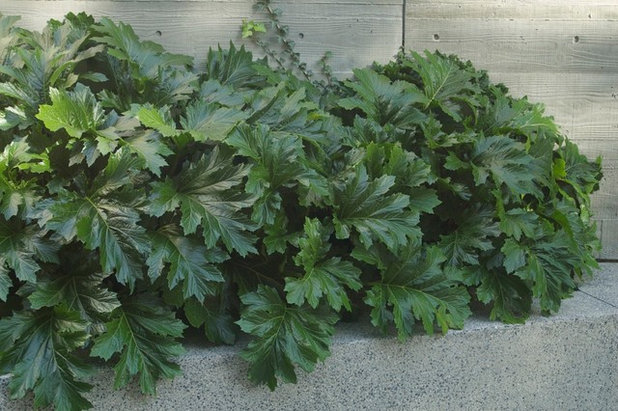
CYAN Horticulture
Bear's Breech(
Acanthus mollis)
No need to build Corinthian columns and plinths to rightfully enjoy acanthus (
Acanthus mollis) in the garden. The model from which the Greek decorative element originated, the acanthus leaf imparts a bold, clean and durable look. It may die down during the coldest spells but will quickly sprout back. Along with cast-iron plant, described next, I use acanthus in large planters deprived of much sunlight.
USDA zones: 6 or 7 to 11 (find your zone)
Water requirement: Wet to moist soil
Light requirement: Partial sun to dappled shade
Mature size: 4 feet tall and wide
Seasonal interest: Year-round
When to plant: Spring or summer
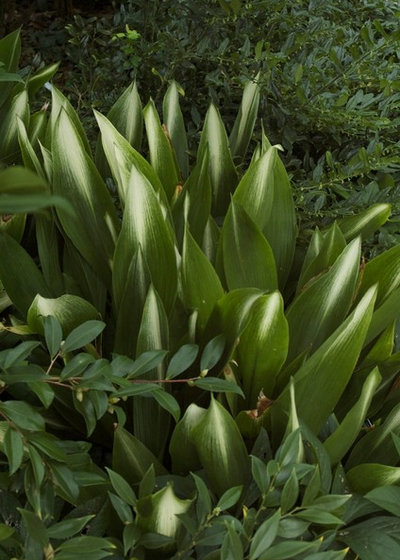
CYAN Horticulture
Cast-Iron Plant(
Aspidistria elatior)
A staple in the American South, cast-iron plant (
Aspidistria elatior) is often sold as an indoor plant elsewhere. For me it has become essential for the darkest porches, where it thrones year-round without flinching. It's indestructible, so the common name was indeed well chosen.
Most of the time it's green all the way through, but a few of the numerous collector's selections sometimes trickle down into the trade, like this mesmerizing variegated one dubbed 'Asahi'. With its clearly upright growth habit and its thick, lush foliage, cast-iron is a standout.
USDA zones: 7 to 11
Water requirement: Well-drained soil
Light requirement: Dappled to full shade
Mature size: 2 1/4 feet tall and wide
Seasonal interest: Year-round
When to plant: Anytime
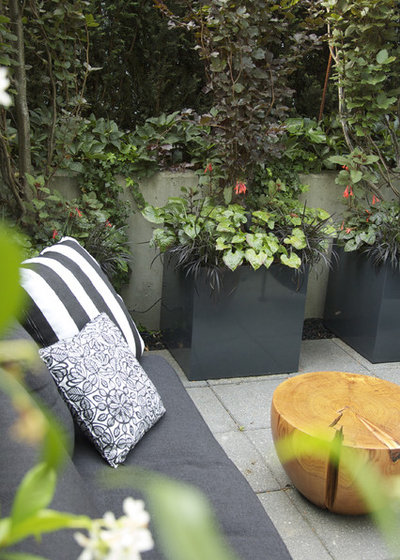
CYAN Horticulture
Bessia(
Beesia deltophylla)
Dear friend and plant explorer extraordinaire Daniel J. Hinkley is to thank for the wide introduction and promotion of Bessia
(
Beesia deltophylla). This smaller grower deserves a prime spot in shady planters (as shown in this Vancouver garden) as much as in formal bedding and naturalistic woodlands.
Heart-shaped, its thick glossy leaves remain healthy looking year-round. For added cleanliness, I remove the gangly scapes produced throughout summer.
Some peeps will be left blah with such a green plant, but I rejoice in knowing that in spite of the weather's ups and downs, my Bessia will tough it through. Loyalty, my friend; that's what it is all about.
USDA zones: 6 or 7 to 9
Water requirement: Moist but well-drained soil
Light requirement: Partial to full shade
Mature size: 1 foot tall and wide
Seasonal interest: Year-round
When to plant: Anytime
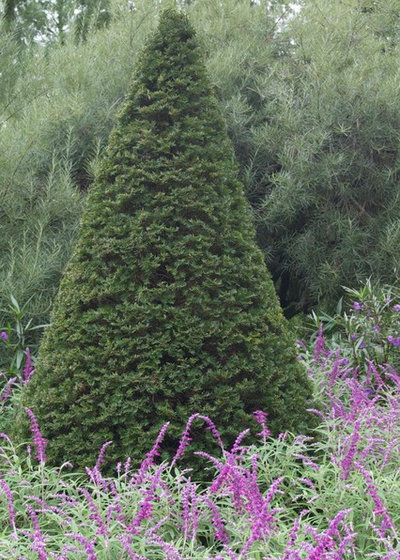
CYAN Horticulture
Upright Yew(
Taxus x
media)
Compared with broadleaf evergreens, coniferous evergreens are, in general, that much hardier. In the warmer reaches of North America as well as on most of its West Coast well into Canada, broadleaf evergreens abound.
In colder reaches, however, the selection is much thinner — boxwood, euonymus, hollies and leucothoes are some of the tougher contenders. Yet there is more to conifers than blue spruces and hedging cedars.
An all-time favorite is yew, upright (
Taxus x
media, shown here) or creeping. Its fine, dark green foliage has nothing to envy of any exotics.
USDA zones: 4 to 8
Water requirement: Moist but well-drained soil
Light requirement: Full to partial sun
Mature size: Variable
Seasonal interest: Year-round
When to plant: Spring to fall
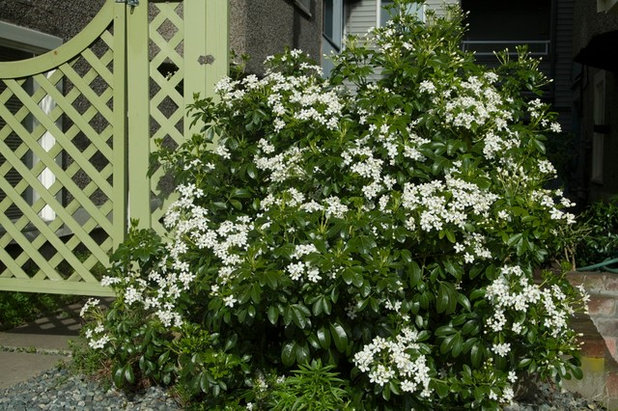
CYAN Horticulture
Mexican Orange(
Choisya ternata)
Mexican orange (
Choisya ternata) must be the one evergreen plant I use the most. While I strive to refrain from falling back to the same plants over and over, this enchanting and versatile shrub is hard to resist.
Naturally rounded and full, easily maintained to a smaller size, generously covered in superbly fragrant clusters of white flowers, Choisya is as close to perfection as it gets. There is even a golden-leafed version named 'Sundance' and a filigree-leaved hybrid called 'Aztec Pearl'.
USDA zones: 7 to 9
Water requirement: Well-drained soil
Light requirement: Full to partial sun
Mature size: 5 feet tall and wide
Seasonal interest: Year-round
When to plant: Spring or summer
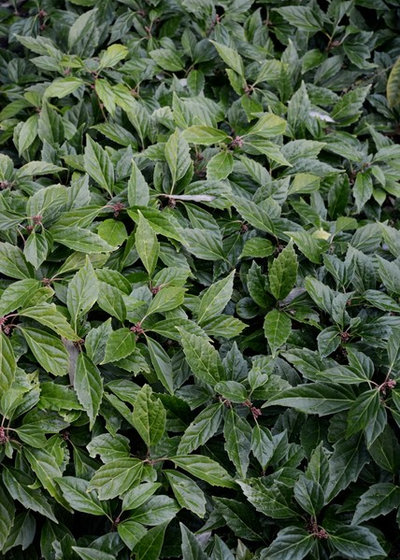
CYAN Horticulture
Pachysandra (
Pachysandra axillaris 'Windcliff's Fragrant')
It's far from my intention to recommend infinite blankets of ground covers. A default design stroke of too many designers and architects, ground covers can be counterproductive and, yes, a pain to maintain. There are, however, areas — at the bases of shrubs, along pathways — where ground covers are welcome.
Of the newer candidates is this gorgeous pachysandra (
Pachysandra axillaris 'Windcliff's Fragrant'). Eons from the oh-so-common Japanese pachysandra (
Pachysandra terminalis), this one is slightly taller, thankfully a tad looser and clad with diminutive yet highly fragrant flowers in the fall and again in late winter. A must-have plant.
USDA zones: 6 to 9
Water requirement: Moist to well-drained soil
Light requirement: Partial sun to full shade
Mature size: Up to 1 foot tall; spreads
Seasonal interest: Year-round
When to plant: Anytime
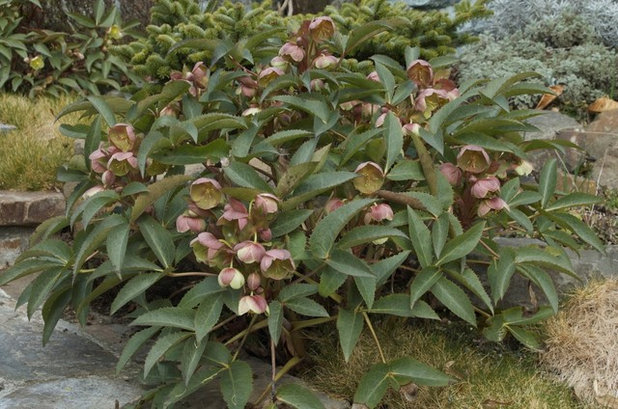
CYAN Horticulture
Helleborus x sterniiIn the past few years, there has been an avalanche of newer winter-blooming hellebores. While some indeed represent a great improvement, there is one older selection that I still deeply cherish:
Helleborus x s
ternii. For its compact habit, it has such exceptional foliar qualities and parsimonious purple-tinted flowers that I haven't consigned this one to oblivion yet. Call me old-fashioned if you will, but this hellebore is a keeper.
USDA zones: 6 to 9
Water requirement: Well-drained soil
Light requirement: Full sun to dappled shade
Mature size: 1 1/4 feet tall and 1 1/2 feet wide
Seasonal interest: Year-round
When to plant: Anytime





